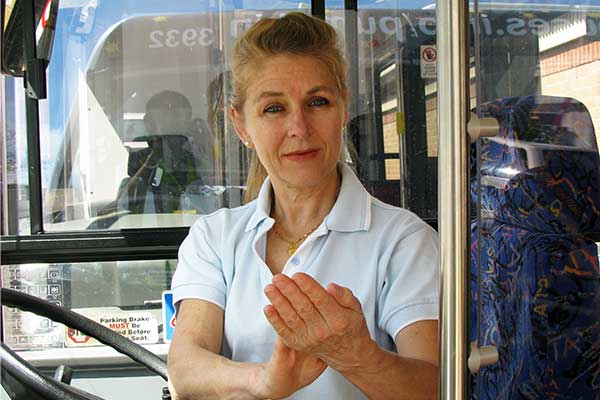Case study – Safety Strategies for transport industry
Karen Armstrong’s Safety Strategies has been training transport personnel for over 20 years, with outstanding results in assault prevention and improved customer service..
Our clients
Safety Strategies has provided training to 10,000 frontline transport personnel since 1996.
Refresher programs have been custom designed to address the specific needs of employees working in high risk environments and duties.
Risk profile
Transport Officers and bus drivers deal with a wide range of people in their daily work. Their safety can be compromised by:
- Aggressive passengers
- Drug / alcohol affected passengers
- Mentally unstable passengers
- Isolated / high risk areas
- School students’ disruptive behaviour
- Attack with a weapon
- Objects thrown at or on the transport
- Late running
- Conflict over fares and rules
- Unpredictable attack
- Working late at night
- Robbery
- Road rage
Safety Strategies’ training provides the skills to prevent, avoid and defuse these situations, and as a last resort, teaches the use of physical protection skills within a legal and professional framework.
Our solution
1. Effective, hands-on workshops
In Safety Strategies’ workshops, participants learn:
- communication skills to provide high levels of customer service
- increased awareness to identify early warning signs
- conflict resolution skills to defuse aggression
how to remain professional, calm, in control and follow organisational policies - physical protection skills within clear legal guidelines.
2. Mapping to Transport and Logistics Training Package
Safety Strategies’ training meets national competency standards that form part of Certificate 111 in Driving Operations (Bus). We have an established track record working with several Registered Training Organisations (RTO’s) since 2000 to map, deliver and assess training. Safety Strategies’ training has been mapped to TLIO3012A Manage disruptive and/or unlawful behaviour. Our training can also be mapped to other units and training packages as required.
The results
Transport organisations benefited in many ways with measurable results in the following areas:
- Compliance with Work Health & Safety requirements
- Reduction in ‘time lost through injury’ – both physical and stress related
- Transport and Logistics Training Package requirements
Industry contracts - Industrial relations and Enterprise Agreement requirements
- Improved staff morale, absenteeism and turnover
- Positive public image and goodwill
- Improved customer service
- Cost savings
Cost savings
Prior to the introduction of Safety Strategies’ training in 2005, one company had nine workers compensation claims per annum from assault. This was reduced to ZERO as a direct result of the training. With an average claim cost of $36,000, the savings was in the vicinity of $324,000.
Safety Strategies’ training was conducted as part of a comprehensive WH&S campaign for over 30 bus drivers in a high risk area working late at night dealing with large groups of drug & alcohol affected passengers. The complete cost of this training, including wages and venue, was significantly less than one recent stress claim from an assault incident.
Another client with a workforce of over 500 drivers had six assault-related injuries in the six months prior to introducing Safety Strategies training. In the six months following training delivery to the whole fleet, injuries were reduced to ZERO.





Survey results
Over 50 bus drivers were surveyed 8-10 months after they had attended Safety Strategies’ training.
Many participants reported that being safe when dealing with aggressive passengers was a concern when taking on this new vocation. Most participants are initially doubtful about their ability to protect themselves in the bus cabin when attending the workshop.
100% of participants reported they:
- were clearer on what steps to take if threatened.
98% of participants reported they:
- felt safer after participating in the training
- felt more confident and improved their professional image.
They were overwhelmingly supportive about the preventative value of this training in their daily work. Staff who can handle challenging situations confidently provide a safe transport service for passengers and the community. Effective safety training is an essential part of attracting and retaining a skilled workforce.